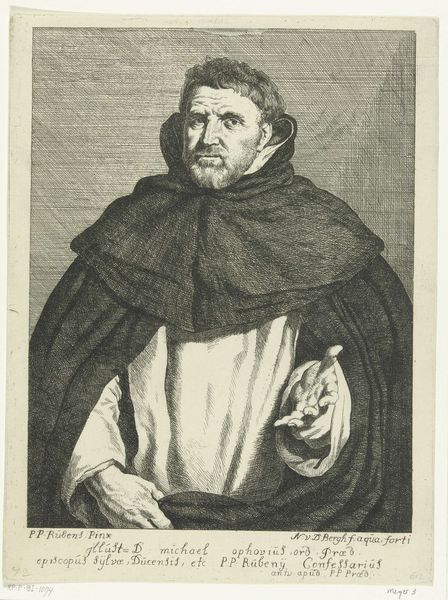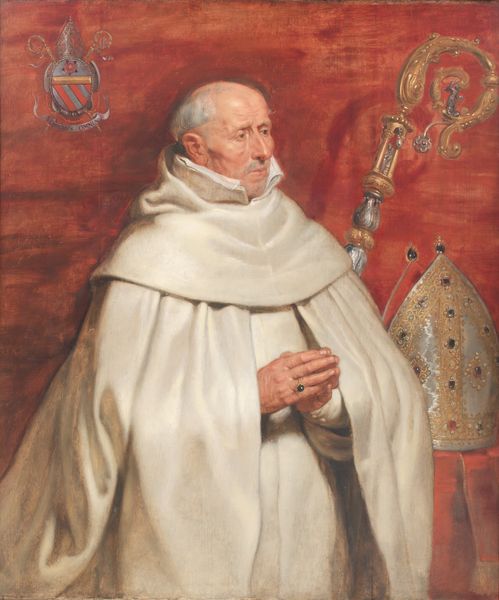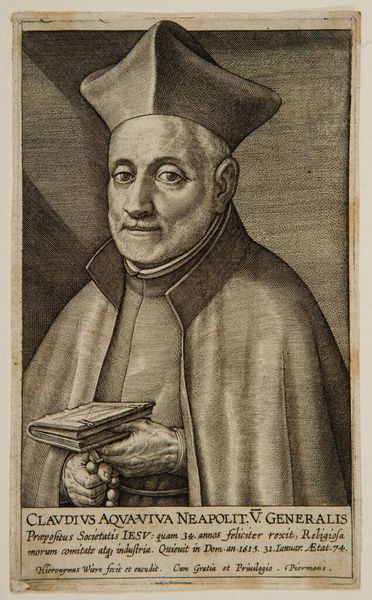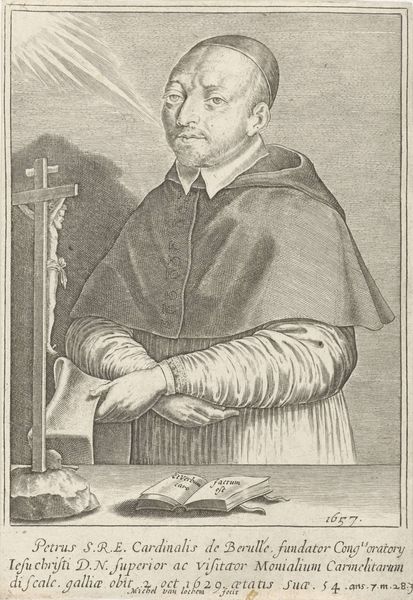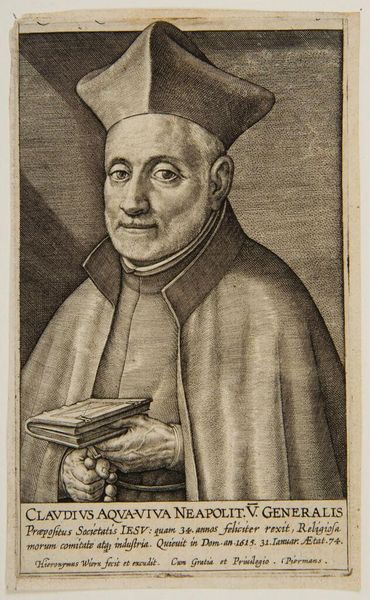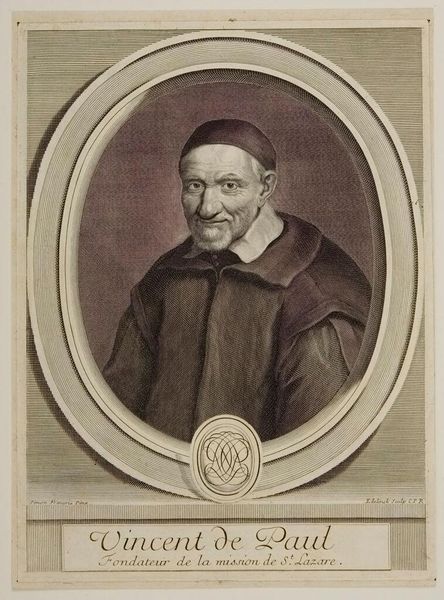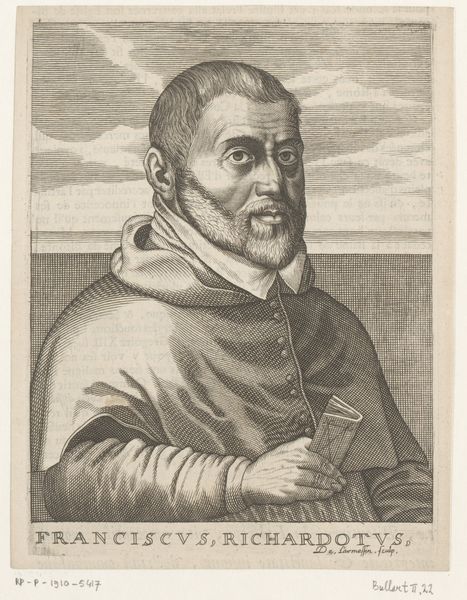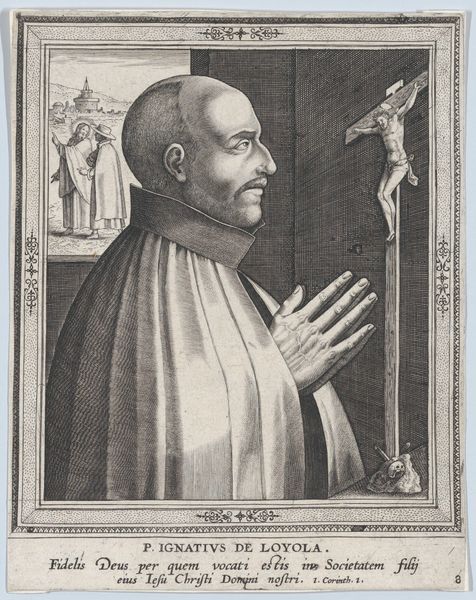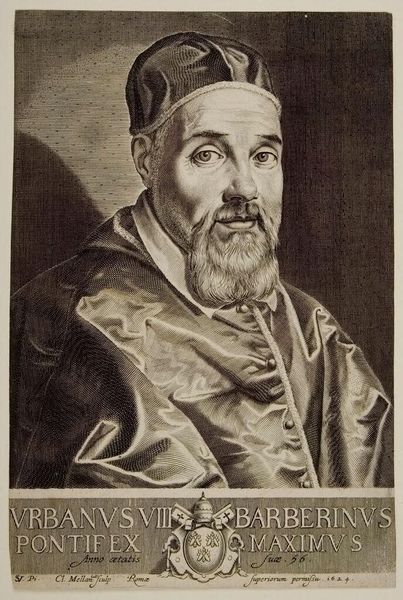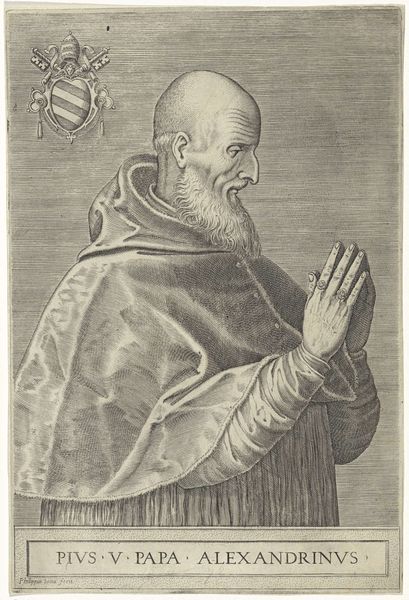
drawing, oil-paint, paper, ink, pen
#
portrait
#
drawing
#
oil-paint
#
paper
#
ink
#
14_17th-century
#
pen
#
portrait drawing
Copyright: Public Domain
Curator: This drawing is a portrait of Michael Ophovius, dating back to between 1615 and 1617. It's attributed to Jan Gerard Waldorp and employs a striking combination of oil paint, pen, and ink on paper. Currently, this work calls the Städel Museum its home. Editor: Well, first thought: inviting, yet slightly melancholic. That outstretched hand seems to say, "Come closer, tell me your woes," but the eyes... they hint at stories best left untold. Curator: Indeed. Ophovius, a prominent figure in his time, was a theologian, known for his deep involvement in the religious and political landscape. His attire immediately tells us he's a member of a religious order, which influenced social dynamics quite significantly. The use of the pen, the lines created, there is quite some movement and dynamism that contrast well against what some might perceive as austere or academic subject matter. Editor: Absolutely. It's almost as if the artist captured a fleeting moment, a vulnerability perhaps, despite his high office. The subtle washes of color give such a sense of depth—he feels remarkably present, like he might step right out of the frame. You could probably write a whole novel about that single hand! It looks a bit stiff or crooked but at the same time invites or gives blessing. It would be intriguing to read more about hand gestures or poses and what meanings they carry. Curator: And how the medium itself contributes. Paper, typically more intimate than canvas, allows a certain immediacy, especially coupled with the fine control afforded by pen and ink. But by combining that with oil, Waldorp blurs lines, pushing back against the conventions of artistic category at the time. The politics of portraiture were also complex: displaying status but hinting at inner character—quite a balancing act! Editor: Yes, it’s not just a face; it is a map! This almost photographic quality reminds me that art has the uncanny ability to preserve moments, but, maybe even better, they can preserve the echoes of feelings and history too, so, if walls could talk, art would sing! Curator: So, the piece functions not just as a likeness, but as a historical document and a study of human character within a complex era. Editor: It's fascinating how much a single artwork can unlock if you just take the time to really look, right?
Comments
No comments
Be the first to comment and join the conversation on the ultimate creative platform.
